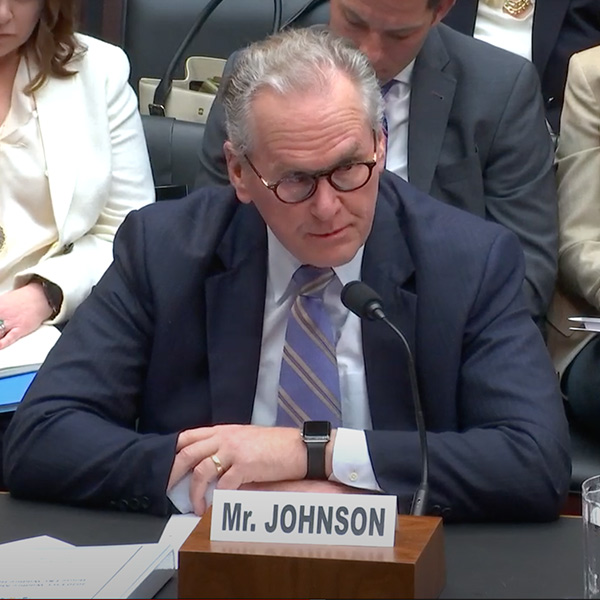MISO will extend its COVID-19 response measures of holding virtual stakeholder meetings and restricting access to control rooms to at least June 1, RTO executives announced Tuesday.
Additionally, the next quarterly MISO Board Week — originally scheduled for June 16-18 in Milwaukee — will also take place via teleconference. The RTO’s Advisory Committee is currently looking for ways to improve experiences during teleconferences and afford all stakeholders an opportunity to speak.
“What happens after June 1 is currently under discussion,” Vice President of System Planning Jennifer Curran said during an Informational Forum conference call.
The pandemic “hasn’t distracted us from reliable operations,” Curran added.
“The last time we held an Informational Forum, we were just learning about COVID-19,” CEO John Bear said, adding that no one in January could have anticipated how much the coronavirus would impact business operations and individuals’ lives.
Bear said day-ahead load forecasts remain difficult to pin down and that MISO is evaluating the possible impacts of continued outage deferrals. (See COVID-19 Transforming MISO Load, Outage Schedules.) Utilities have so far shifted about 18 GW of generation outages to later dates in response to the pandemic.
MISO has also explored the possibility of sequestering its essential control room employees to protect their health.
“We’ve decided not to sequester at this time,” Curran said, adding that the RTO relied on risk analyses from epidemiologists in deciding against that measure for the time being.
MISO began physical separation of its staff on March 9, with all non-control room staff working virtually.
Curran said it’s difficult to predict when employees will be able to return to on-site work, adding that it would undoubtedly occur “in phases” and depend on the availability of testing. She said MISO’s return to normal business operations involves “risks and tradeoffs.”
“I think the new normal will look different than the old normal,” Curran said.
With most of MISO’s 15 states under lockdown orders, load is down about 10% relative to historically normal conditions. Eleven states in the footprint are currently under explicit lockdown orders, compared with eight at the end of March.
MISO in late March began seeing loads down about 7% compared to normal conditions, Executive Director of Market Operations and Resource Adequacy Shawn McFarlane said.
“The past two weeks have been pretty close to 10%. We may have bottomed out depending on further developments,” McFarlane said. “I feel like we’re in a steady state unless something else changes.”
MISO experienced an 80-GW peak in March, down 18 GW from 2019. It has said that some of the load decline can be attributed to higher temperatures this year.
Energy prices in March fell more sharply than load, with real-time LMPs averaging $18/MWh for the month compared with $26/MWh a year earlier. MISO said the more than 30% drop can be chalked up to falling natural gas prices and reduced load stemming from the stay-at-home orders.
MISO Now Displaying Self-commitment Data
MISO has begun publicly displaying information about must-run resources in response to concerns about self-commitment of coal plants, a practice that some in the industry criticize as expensive and inefficient. (See Enviros, States Question Coal Self-commitments.)
The RTO has added self-commitment data to its monthly operations reports, including both monthly and 13-month charts to presentations.
MISO executives said the data were requested by stakeholders and will be broken down by category: economically committed and economically dispatched by the RTO; self-committed and economically dispatched; and self-committed and non-economically dispatched.
In March, MISO reported 14 TWh of economically committed and economically dispatched self-committed coal and gas generation; 17 TWh of self-committed and economically dispatched generation; and 12 TWh of self-committed and non-economically dispatched generation.
Independent Market Monitor David Patton said his group continues to evaluate must-run patterns of behavior in MISO, though he’s not “nearly as concerned as others” about the issue. He said MISO resources “are being offered economically more often and more frequently not being scheduled day-ahead.”
Patton said must-run designations are being used less frequently. When they are used, it’s to prevent units from cycling uneconomically.
“It’s rational not to give MISO the opportunity to shut them down when their cycle is eight to nine days,” Patton told executives and stakeholders in March during a winter operations review.
“I think the concern that has jumped up recently is disproportionate compared to what it is. … We don’t see the same concern as we monitor the operation of these units,” Patton said.
A few years ago, coal resources provided more than half of all MISO’s energy, compared with about a third today. Patton said coal resources tend to set prices at night, while natural gas resources set them during the day.





